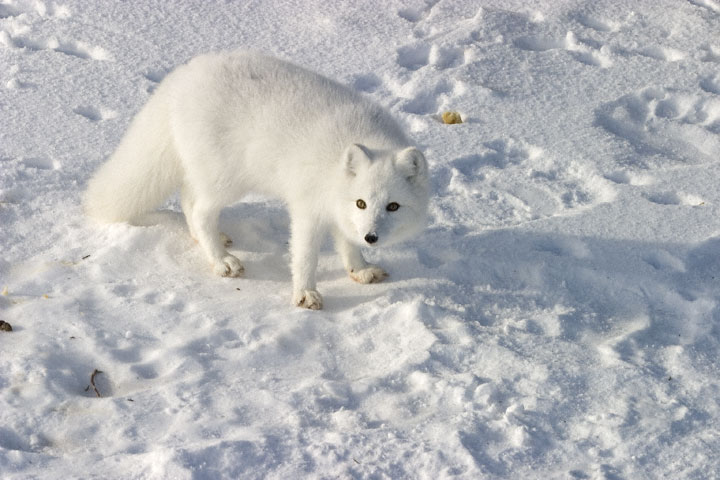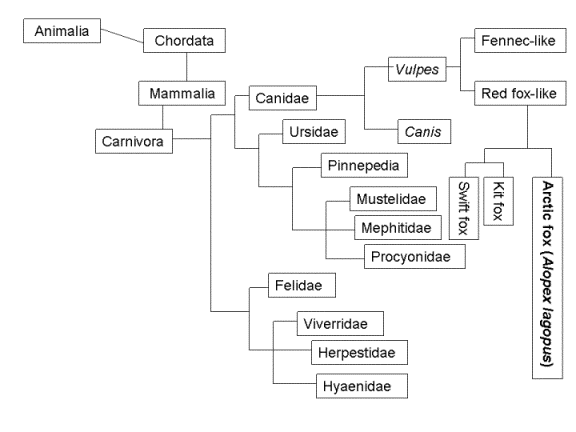Who I'm Related To
|
Domain |
Eukarya |
|
Kingdom |
Animalia |
|
Phylum |
Chordata |
|
Class |
Mammalia |
|
Order |
Carnivora |
|
Family |
Canidae |
|
Genus |
Alopex |
|
Species |
Alopex lagopus |

Eukarya: sexual reproduction, multiple linear chromosomes within the cells, and an endomembrane system that compartmentalizes the cytoplasm, leading to membrane-bound organelles.
Animalia: multicellular, lacks cells walls, heterotrophic, and has different cell types.
Chordata: presence of a spinal cord and bilateral symmetry.
Mammalia: warm-blooded, mammary glands, hair, a diaphragm, and a four-chambered heart.
Carnivora: feeds on other animals
Canidae: carnivorous mammal of the dog family and possesses very pronounced canine teeth.
The Arctic fox has long been considered the only member of the Alopex genus rather than grouped with other foxes in the genus Vulpes due to a few of the Arctic fox’s unique characteristics which differ from those of other foxes. For example, the Arctic fox has short, rounded ears and long hairs on the pads of the foot, unlike the large pointed ears of other foxes, which also lack the long hairs on the pads of the foot. The species name lagopus means “hare-footed” and refers to the thick hair covering the pads of the feet.
According to the entry on Arctic foxes in the Encyclopedia of Mammals Volume I, usage of the vulpine lineage clusters vulpine foxes. It states that the lineage is "separated into two parts, the Red fox-like and the Fennec-like forms. The Red fox-like cluster includes the Kit, Swift, and Arctic foxes and many of the Old World species" (MacDonald, 2001). These species of foxes have only recently evolved and form a subunit within the Red fox-like cluster. Some authorities classify the Arctic fox as Vulpes lagopus due to its similarities to other fox species; however, we will continue to refer to it by the name Alopex lagopus.
